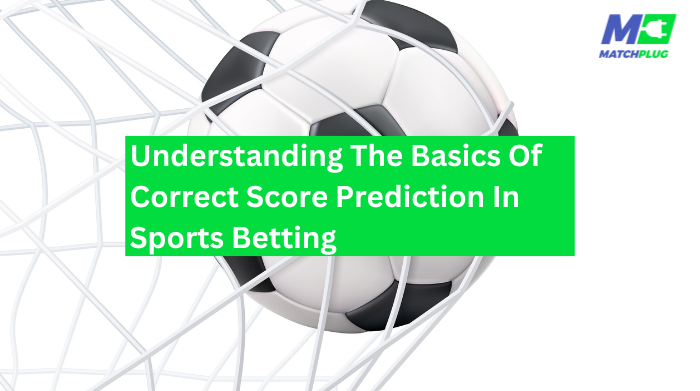It is important to consider home and road records when predicting the outcome of sports matches due to several reasons.
It’s a familiar setting which increases confidence and comfort. They are familiar with the field or court which is a huge advantage.
Fan Support: Home team’s gain from their fans’ support. This boosts motivation. The energy of the crowd can affect the performance of the team at home and can intimidate opponents.
Travel Fatigue
Physical and mental fatigue Teams who travel frequently encounter challenges when traveling which can cause physical fatigue as well as disruptions to their routines, which can adversely affect their performance.
Traveling long distances can cause athletes to fall asleep and be less prepared.
Historical Trends
Consistent Performance: Previous records of home and away can reveal patterns. Certain teams perform consistently better at their home stadiums or suffer a lot in traveling.
Success at specific venues: Certain teams could have especially successful records at specific venues due to the familiarity of their players or favorable weather conditions.
The importance of statistics
If enough games are played, the outcomes of home and away matches can be predicted using statistics. Through many games they could reveal actual trends.
Comparative Analysis: Comparing away and home performance can highlight discrepancies and provide insights into the overall ability to adapt and consistency.
Psychological Factors
The expectations of home crowd when they play can result in stress. Teams have to deal with this pressure in order to keep up their the level of performance.
Comfort Level: The level of comfort at home can positively affect the player’s performance.
Context of the Match:
The significance and importance of a game can impact the results of both home and road records. In certain instances the team’s performance could improve regardless of where it plays.
Opponent Quality: The quality of an opponent may influence the amount of weight to give to home and away records. More powerful teams can mitigate home advantage better.
External Factors
Weather Conditions. The weather conditions in outdoor sports can vary dramatically between different locations. This impacts performance. Home teams are generally more comfortable with local weather conditions.
Surface and Altitude : Different playing surfaces like clay, turf or grass and different altitudes could affect teams. The home team is often more suited to these conditions.
The home and away record is crucial in forecasting the outcomes of sports. The records are a great opportunity to get a better understanding of the dynamics of a team. They are especially useful when they are combined with other aspects like current performance, injury status, and head-to -head records. A comprehensive analysis that includes records for home and away is more likely to provide more precise predictions. Read the top rated best tennis predictions for site recommendations.

What Is The Significance Of Statistical Analysis To The Prediction Of The Results Of The Sport?
It is important to use statistics when predicting the outcomes of sports. It offers a data-driven method to comprehend player and team performance, trends, and potential results. This article will discuss the reasons why statistical analysis is vital.
Data-driven decision making: Statistical analysis remove the bias and provide objective insights into performance metrics. This makes it easier to make better predictions, based not on intuition but rather hard data.
Performance Metrics – Key performance indicators such as team statistics and player statistics are crucial for accurate evaluation.
Detection of Trends and Patterns:
Historical Trends: Analyzing historical data allows you to uncover patterns like winning streaks, the performance of specific conditions, or outcomes against specific players.
Momentum and Form. The statistics on the performance of recent games like a particular form of play in the last couple of games are crucial for predicting the momentum of the moment.
Comparative Analysis
Head-to-Head Records: Statistical analysis of previous matches between teams or players can identify patterns and possible outcomes based on historical performance.
Home vs.Away performance: Detailed stats on home and off-field records give insight into the teams’ performances in different settings. These statistics can be utilized to create more precise predictions.
Advanced Metrics
Predictive Models: Advanced statistical techniques, such as regression analysis and machine learning algorithms as well as predictive modeling, allow you to predict outcomes with greater accuracy. These models consider several variables at the same simultaneously.
Expected Goal (xG). In soccer and other sports, metrics, such as expected goals, give insight into the quality of scoring chances. These metrics help to gain a better understanding of a team’s offensive capabilities, and also its defense capabilities, besides their goals.
Analyzing the player and Team
Individual Performances: The use of statistics on the performance of players can help to assess their fitness levels, potential impact, and the current state of their performance. This also includes an analysis of players with the potential to influence the outcome of the game.
Team Dynamics Statistics of the team, such as passing networks, defensive solidity and attacking effectiveness, provide a complete picture of how well the team performs as a whole.
Situational Statistics:
Clutch performances: Stats of performance under high-pressure situations, such as final minutes of games or in playoff scenarios, can be used to predict how players and teams will fare under similar circumstances.
Weather and Conditions: Statistical analysis may also consider the effect of external variables like weather, altitude, or playing surface on performance.
Market Analysis:
Betting Odds. The statistical analysis is often in sync with betting markets. These markets contain huge amounts of information as well as expert analysis and other variables. Monitoring changes in odds can give insight on the probabilities of specific outcomes.
Value Bets: Finding discrepancies between statistical predictions and betting odds can highlight value bets in which the statistical probability of an outcome is higher than the odds suggest.
Impact of Suspension and Injury:
Player Availability – Statistics on the performance of teams with or without a certain player(s) will give an indication as to how suspensions and injuries impact a match. This can include analyzing team depth and the effectiveness of substitutes.
Real-Time Data:
In-game analysis: Live stats data can give real-time insights into the flow the game. This allows dynamic predictions to be made and the prediction prior to game can be adjusted.
The analysis of statistics in sports is crucial to the prediction of outcomes. It is a systematic approach to analyze and predict future outcomes. Through the integration of historical data, performance metrics, advanced modeling techniques, and other factors, statistical analysis improves the accuracy and reliability of predictions about sports events. Have a look at the best atp matches today for website tips.

What Is The Importance Of Taking Into Take Into Account The Odds Of The Market And Trends When Attempting To Predict Sporting Results?
The significance of market prices and trends in predicting the outcome of sports depends on a myriad of factors. Here’s the reason they matter:Aggregate Knowledge:
Betting Markets: Betting marketplaces are generally regarded as reliable markets because they aggregate collective knowledge and opinions from many bettors. As a result, odds represent a consensus of the most likely outcome.
Information Incorporation: Market odds rapidly incorporate new information, such as team news, injuries or weather conditions, making them a useful source of information in real-time.
Indicator of Confidence
Probability Assessment: Odds are a reflection of the probabilities assigned by betting markets for each outcome. Lower odds are indicative of greater probability.
Market Sentiment: Clearly marked changes in odds, including sudden shifts or steady changes, can signal changes in market sentiment, reflecting new information or changing opinions about the game.
Risk Assessment:
Risk Management: Bookmakers modify odds to reduce risks and to balance their books. The understanding of these changes will help bookmakers understand the outcome of games and risk.
Arbitrage: If odds are different between bookmakers, arbitrage is possible. Bettors profit from betting on a variety of outcomes.
The influence of public perception
Public Perception: Market Odds can affect public perception, media coverage and expectations of a specific game. This could influence players’ and team’s motivation.
Self-Fulfilling Prophecy: Major matches that feature teams with a high probability of winning could witness increased betting activity and result in further shifts in odds, and possibly helping to improve the odds of winning.
Correlation statistics:
Accuracy Indictor: Generally speaking, market odds tends to correlate with the probability of a particular outcome.
Calibration The process of comparing the probabilities of the market with forecasts from statistical sources is a way to assess the accuracy.
Consideration of Market Biases:
Overreaction: Markets may overreact to certain events such as injuries to key players or team performance that has been recently improved, resulting in exaggerated movements in the odds.
The underestimation of underdogs by bookmakers can sometimes underestimate the odds of underdog teams, especially in high-profile matches, creating value betting opportunities for astute gamblers.
External Influences:
Manipulation risk: Betting market movements can be influenced unrelated factors, like rumors, speculations or match-fixing attempts. Knowing these aspects is essential when it comes to interpreting the movement of odds.
Regulative Changes to the regulatory framework. Changes in gambling regulation or market dynamics could also affect the movement of odds and market efficiency.
Contextual Analysis
Market odds can be used in conjunction with other factors such as team formation injuries, team form strategic considerations, or the past information.
Market risks are easy to integrate into models. They can be utilized as inputs or benchmarks to measure model performance.
Market movement and odds are essential in predicting sporting results, because they reflect collective wisdom and sentiments of the betting industry. Understanding the dynamics of markets, though not perfect and must be considered in conjunction with other factors in predicting the outcome of sporting events, can offer valuable insights. 